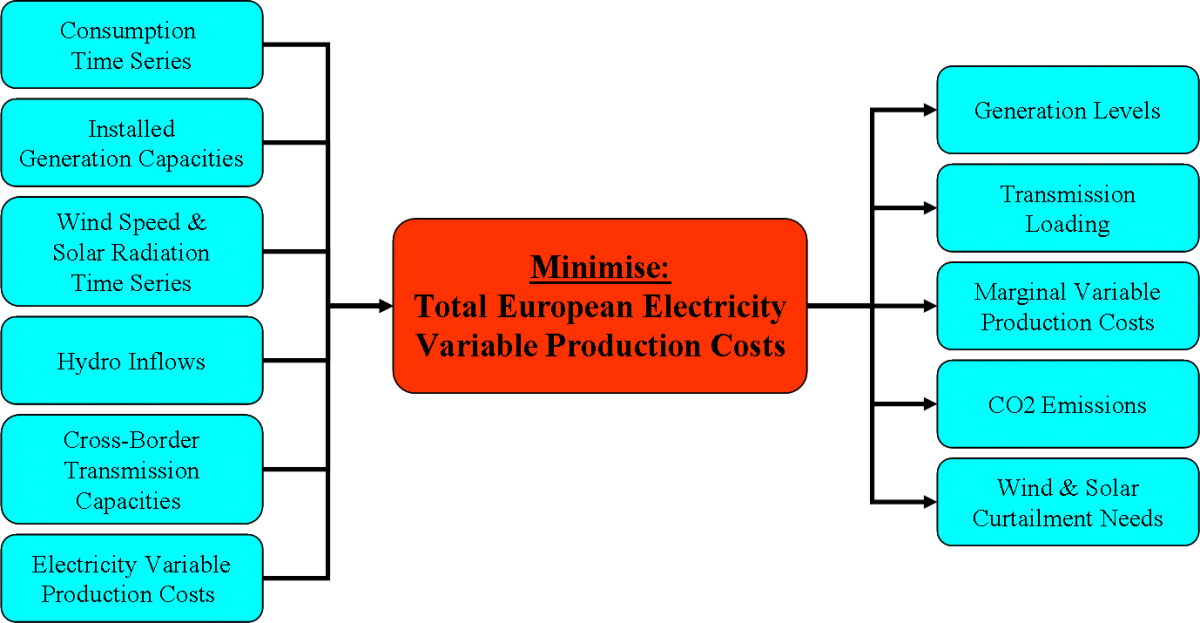The Smart Electricity Systems Research Group has developed EUPowerDispatch, a European electricity transmission network model, to analyse the impacts of the future increase of variable renewable energy on the European cross-border transmission capacity needs and future plans.
The Model can be defined as a minimum cost dispatch model whose optimisation is coded in the General Algebraic Modeling System (GAMS) using CPLEX, a high-performance mathematical programming solver from IBM. The off-line input/output data processing is performed using Matlab.
The objective function is the minimisation of annual electricity variable production costs in the interconnected European countries considered in the model, which is solved in the form of a mixed-integer linear problem. The core of the model can be described as a Minimum Cost Flow Problem (MCFP) taking into account generation and transmission constraints.

The model includes 32 interconnected nodes, each representing a European country. The number of cross-border interconnections varies depending on the time horizon of the scenario being modelled. The model covers a time-frame of one year with a time-step of one hour. Due to computational capability limits the model is unable to run a whole year with one hour time-step. Therefore, a preliminary yearly run with weekly time-steps sets the hydro seasonal reservoir levels at the start and end of each week at each node. These constraints are used as inputs for 52 weekly runs with one hour time-steps. Hydro seasonal reservoirs are the only storage element with an annual management and hence it is assumed that all the other variables can be analysed within a week time frame for each of the 52 weeks in the year. For simplicity, the model represents 364 days in the year, equal to 7 days times 52 weeks; the last day of the year is not considered.
The model inputs are generation capacities and load time-series for each energy source at each node, transmission limits, weather data (including wind speed, solar radiation, run of river flows and inflows to seasonal hydro reservoirs) and variable electricity production costs per energy source. The main model outputs are provided for each hour of the year and they include generation levels for each energy source at each node, marginal variable electricity production costs at each node and cross-border flows. In addition, CO2 emissions and renewable energy curtailment needs are also calculated. Joint Research Centre - Energy Security Unit - Smart Electricity Systems
